28th Jun 2024
Hiking Guide for Beginners
Get a head start on hiking with this comprehensive guide to getting out on the trails.
28th Jun 2024
Get a head start on hiking with this comprehensive guide to getting out on the trails.
Hiking is the perfect way to enjoy the countryside around you. It benefits your physical and mental health, and apart from the cost of the equipment you need, it’s completely free to do. From short and easy trails to epic multi-day adventures, there’s a hike for every level of explorer.
So, what’s the difference between a hike and a walk? Well, a hike is essentially just a more challenging walk, usually on a trail and most commonly on mountainous or steeper terrain. The difficulty of hikes can range from a light stroll in the hills to an all-day endurance test at altitude. That’s the beauty of hiking, you can enjoy yourself at whatever level you choose.
In this guide, we will help you to gain the confidence to start your hiking journey by answering common questions around everything to do with hiking.
Hiking Gear
How do you choose the right footwear for hiking?
A good pair of hiking boots / shoes will make your hiking experience much more enjoyable. The type of footwear you need will depend on your experience level and the types of trails you’re planning on tackling.
If you want to move quickly over consistent and even terrain, then lightweight trainer style shoes will be ideal. Or if you’re looking to hike at a steady pace over rocky and uneven terrain, the added ankle support of a hiking boot will give you extra confidence and assurance on the trail.
Depending on the climate of your hiking destination, you might want to opt for waterproof footwear to help protect your feet from muddy puddles and splashes.
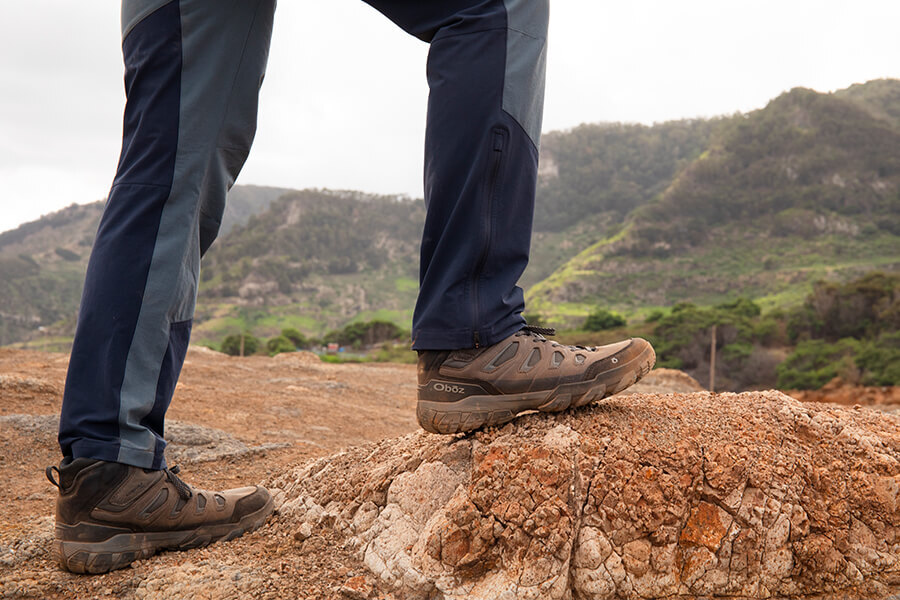
What are the best clothes for hiking?
Your hiking wardrobe should be equipped for all weather conditions. From sudden storms to sunny spells, you’re bound to encounter every possible weather type on the trail, so make sure to pack accordingly.
Make sure that the fabrics you choose are quick-drying and moisture-wicking. This will keep you feeling comfortable even as you build up a sweat and help you to regulate your body temperature as your activity levels rise and fall. Avoid clothes made from cotton as they will retain moisture which will compromise your layering system.
Depending on the season and the weather conditions, you might need a full 5-layer clothing system, or just a base-layer and a shell. Changeable conditions demand versatile clothing, so it’s a good idea to always bring a waterproof layer, and an insulating layer – even if they stay in your pack the whole hike.
An important factor to consider is your sock selection. For obvious reasons, keeping your feet comfortable while hiking is of paramount importance. Technical socks can help to support your feet and enhance your comfort by wicking away moisture and enhancing breathability.
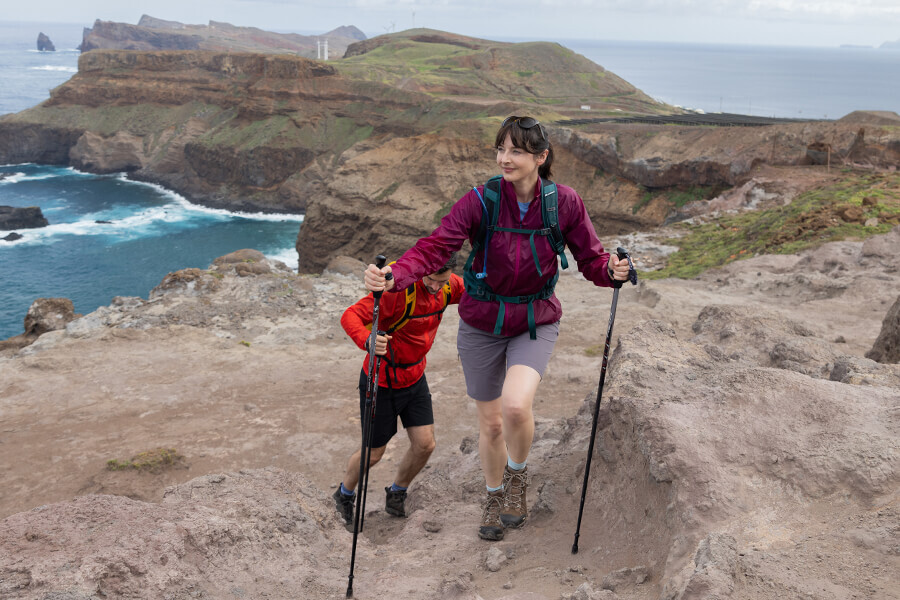
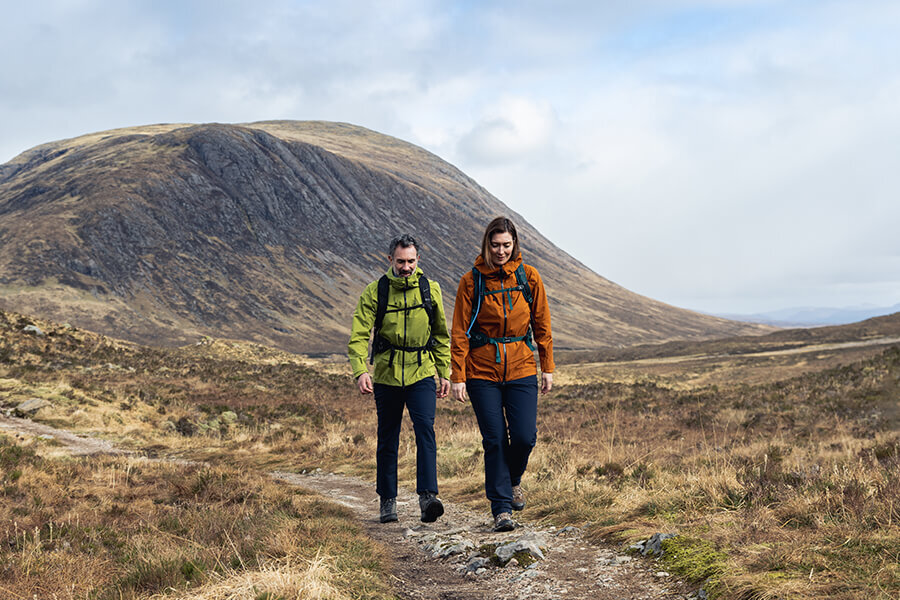
How do you use hiking poles correctly?
Hiking poles can be a useful tool to help you feel more comfortable on tricky terrain and lessen the load on your feet and knees over long distance hikes. They can also help to increase your walking speed and improve your posture by encouraging you to walk in a more upright position.
To set the height of your hiking poles, adjust the length so that the bottom of the handle sits just above your hips with your elbows at roughly a 90-degree angle. Depending on your proportions and the demands of the terrain you may need to slightly adjust from here, just make sure to fully secure the poles so that they don’t change height while you walk!
It’s a good idea to practice with your hiking poles to make sure that you’re trail ready when the time comes. Aim to plant the pole a little way ahead of your step and keep a relaxed but consistent walking tempo.
Once you find the rhythm with your hiking poles, you might notice that your shoulders and arms become quite tired. This is completely normal and just means that you need to build up to using your poles for longer periods of time.
Hiking poles aren’t for everyone and it’s worth remembering that when not in use you will need to carry them with you, so it’s worth weighing up the pros and cons to see if they’re right for you.
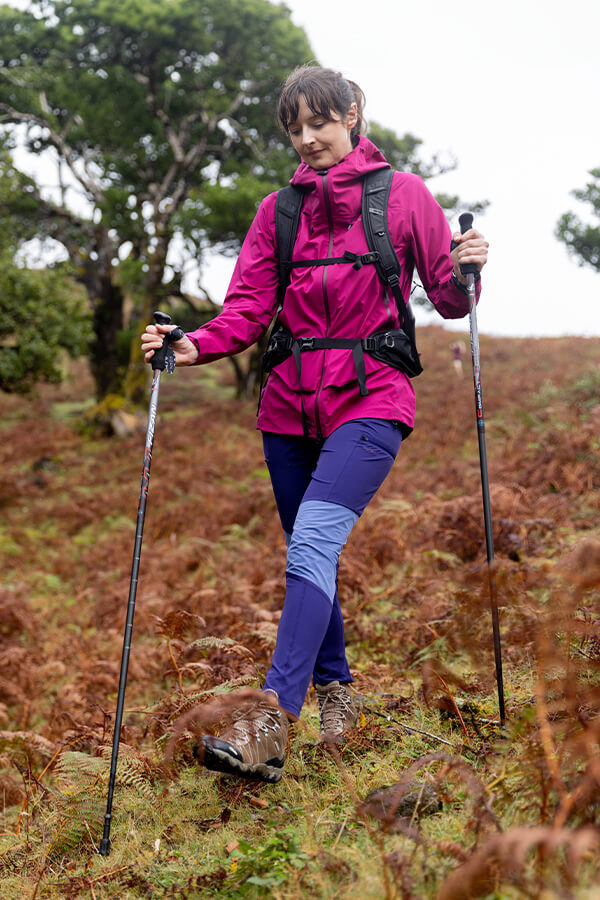
What accessories do you need for hiking?
Navigation – This can be as simple as a map or as high tech as a GPS device. Whatever you choose, it’s always a good idea to have a method of finding out where you are and where you’re going.

Extra layers – A waterproof or an extra insulated layer is never a bad idea to bring with you. Most modern technical layers are very packable so they shouldn’t take up too much space in your pack.
Extra food and water – It’s tempting to bring only as much food and water as you think you might need, but we’d advise bringing extra just in case you’re out for longer than you planned or if something goes wrong. High energy low prep foods like dried fruit, snack bars, and nuts are ideal.
These accessories will ensure you’re prepared to start your hiking journey. If you’re planning on taking on a more challenging hike, check out our Level up your hiking guide for an upgraded accessory list.
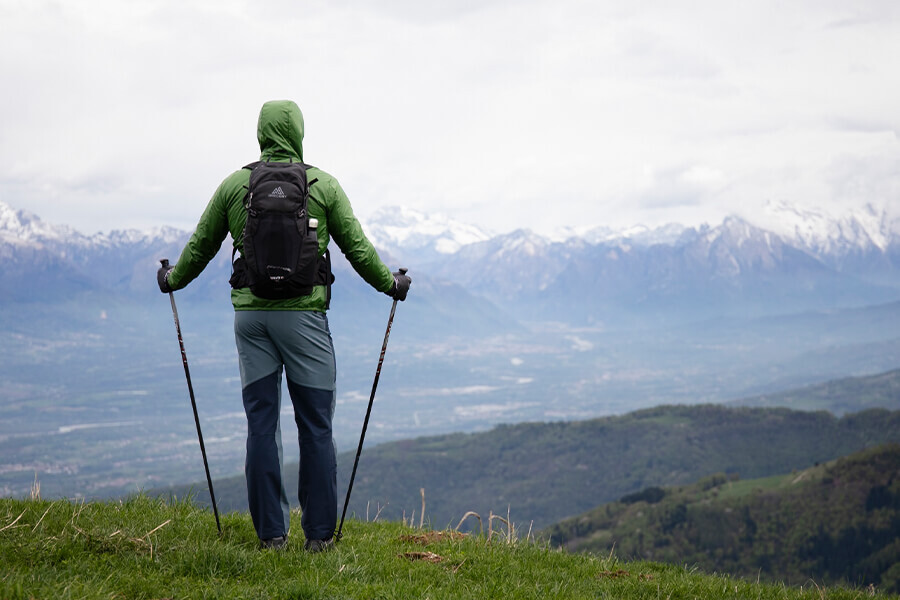
Getting the most out of your hikes.
How do you choose the right hike for your level?
There are a few considerations to keep in mind when choosing the best hike for your experience level. It’s understandable to want to jump in at the deep end and explore all of the scenic and high-level trails, but getting in over your head can be dangerous.
For your first few hikes, you should pick short and easy routes that are close to home. This will help you to gauge your fitness level and establish the difficulty of trails you should be choosing. Always double check the elevation gain of your hike, some trails might look short and easy but if it requires you to walk up a steep hill then it will feel a lot more challenging.
When planning your hike, always consider the location, total distance, elevation gain, difficulty, and duration.
How do you find nearby hikes?
It can feel overwhelming to try and find information about the hikes and trails in your area or further afield. There are many hiking guidebooks you can purchase, but for a free and easy resource you can visit AllTrails.com.
With guidance on over 20,000 trails in the UK alone and full descriptions and difficulty ratings, you can easily find your ideal hiking route. All you need to do is sign up for a free AllTrails account and you’re good to go.
Alternatively, you don’t have to follow a specific route or trail to go hiking. You can just set off to an area that you know and explore as much or as little as you’d like.

Whether you’re planning a high-level multi-day hike, or just a quick ramble around your local area, we hope that the information in this guide has given you the confidence to get out there and enjoy the wonderful world around you.
And if you’ve got any questions about what clothes or gear you might need, why not give our friendly Customer Service team a call or pop into your local Rohan store and chat to our knowledgeable shop staff.